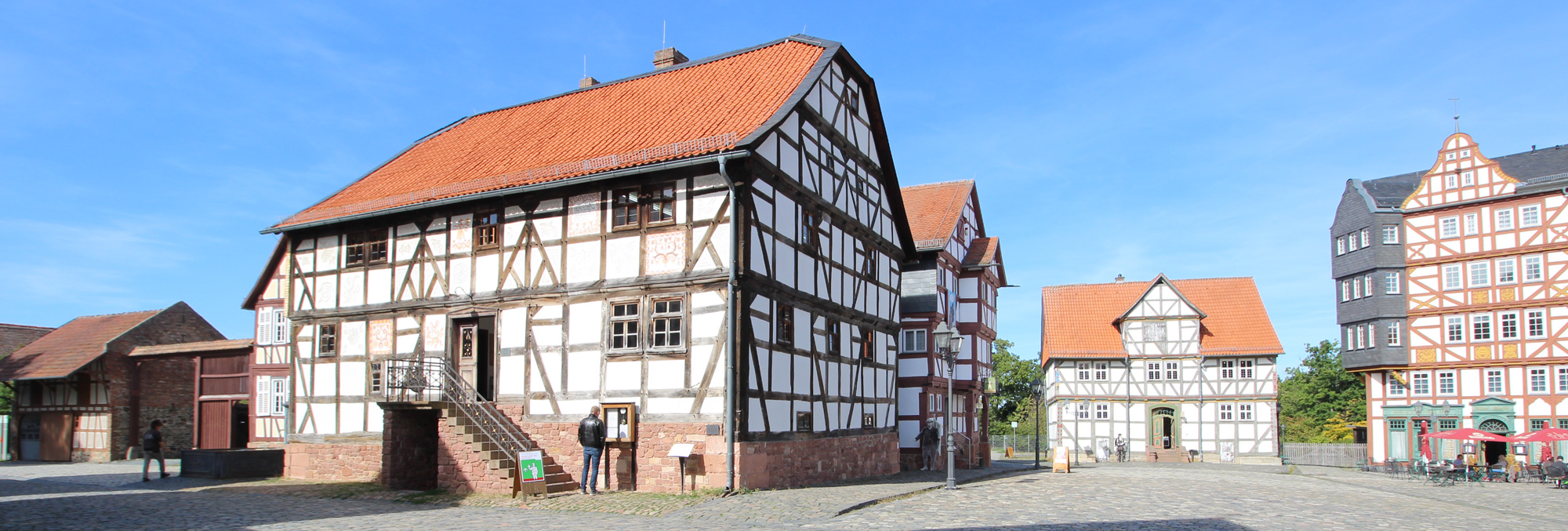Mill from Rörshain

Built: 1796 to 1799
Dismantled: 1984
Reassembled: 1984/85
The two-storey building comprising living quarters and a mill stood in Schwalm in northern Hesse and was part of large three-sided farmstead north of the village of Rörshain. At its former location, the yard was situated right next to the Zeigerich, an ancient wood that today belongs to the Frielendorf State Forest. This is why the mill was also known as the Zeigerich Mill. The first record of a mill in this area dates from 1564. Since the late 18th century, the mill was owned by the Völcker family. In 1952, Georg Claus, married to Anna Katharina, née Völcker, is registered as owner and in 1977 their son Horst Claus took over the mill as its last owner.
The farm was altered a number of times and the estate was extended. According to a site map from 1923, the mill yard consisted of the mill with dwellings, a stable barn, stable and a bakehouse that had to be demolished in 1977. The grain and oil mill supplied the villages Linsingen, Michelsberg, Rörshain, Leinsfeld and Niedergrenzebach until it too was affected by the great decline of mills. In the mid-1920s, the oil press (for rapeseed and beechnuts) was discontinued and removed, and flour production declined as well. Only the milling of meal for animal feed kept the owner of the Zeigerich Mill in business until the early 1950s. This development coincided with the transition of the meal production to agricultural enterprises in the early 20th century.
The construction of a new dwelling set an end to the mill’s role as a family home, followed by the shutdown of the mill and the deregistration of the business on January 1, 1955.
The distinctive features of this mill are its decorative pargetting and upper floor wall panels with painted plant and geometric ornaments. One panel features a painted quote:
Actions speak louder than words
Borrow little, and pay cash / Live and
Let live / Then you will be /
Who you are. In the Year 1799.
At the Open Air Museum, the exterior of the building is presented in its state in 1850. Its interior has been gutted and the former mill now serves as an administration building. The registry office is located in the basement, the Hesse School for Clockmaking is installed on the upper floor.
As the mill from Rörshain is being restored, the registry office of Hessenpark will move to the house from Münchausen in 2017. Later on, it will be historically refurbished as a classroom and a teacher’s flat. The upper floor will be home to a permanent exhibition on historic village schools and daily life at school.

Mit dem Laden der Karte akzeptieren Sie die Datenschutzerklärung von Google.
Mehr erfahren




